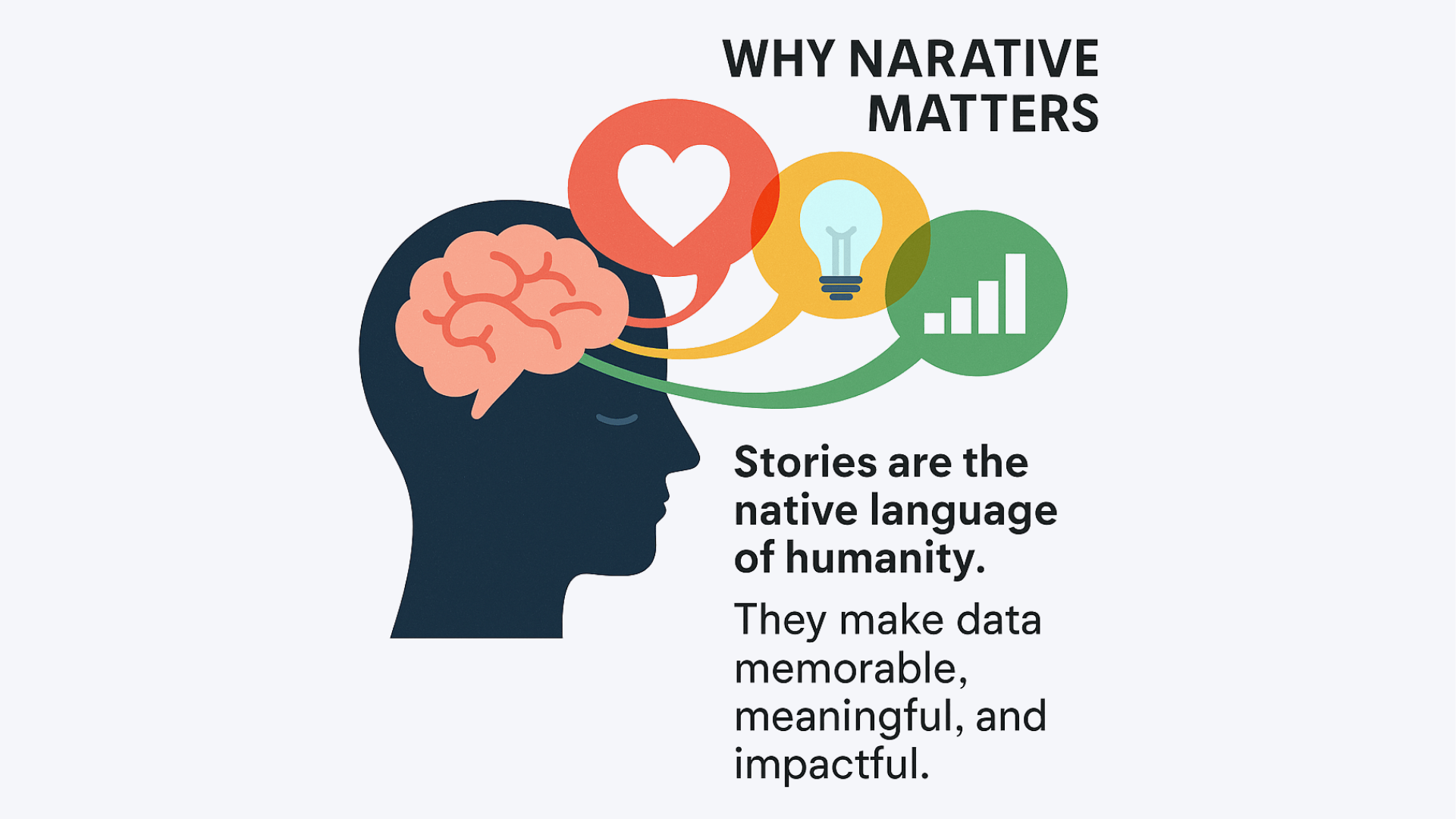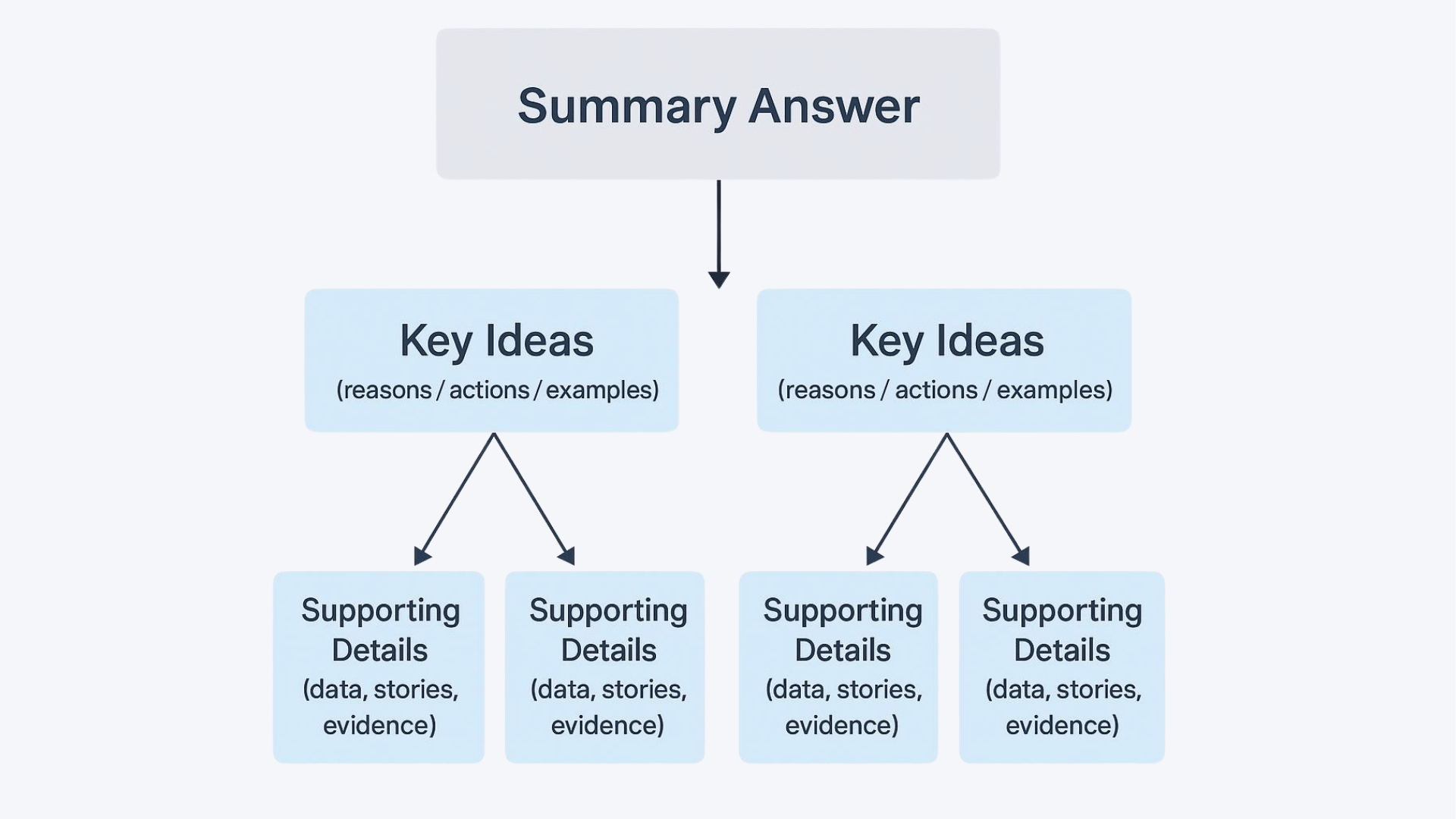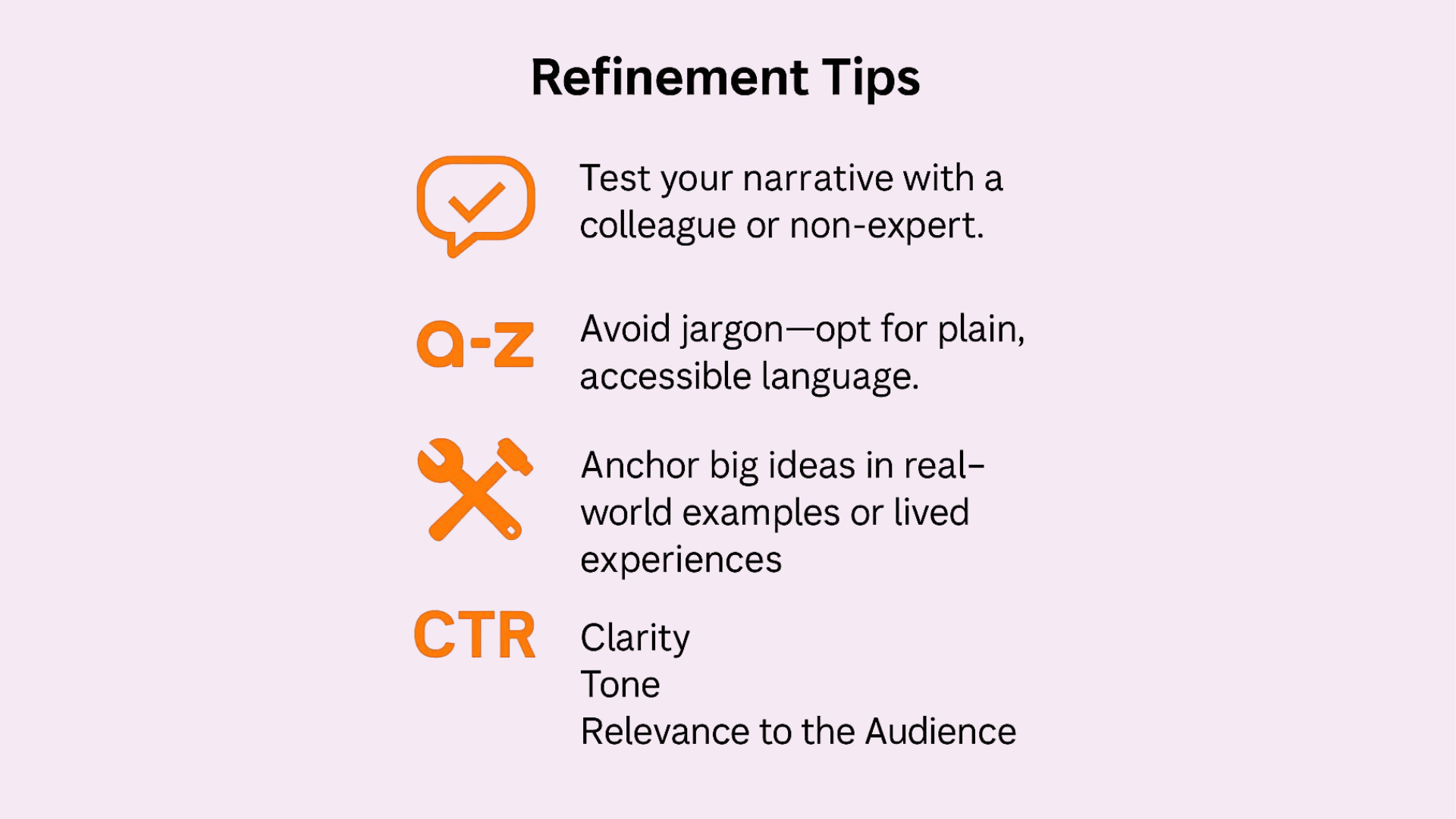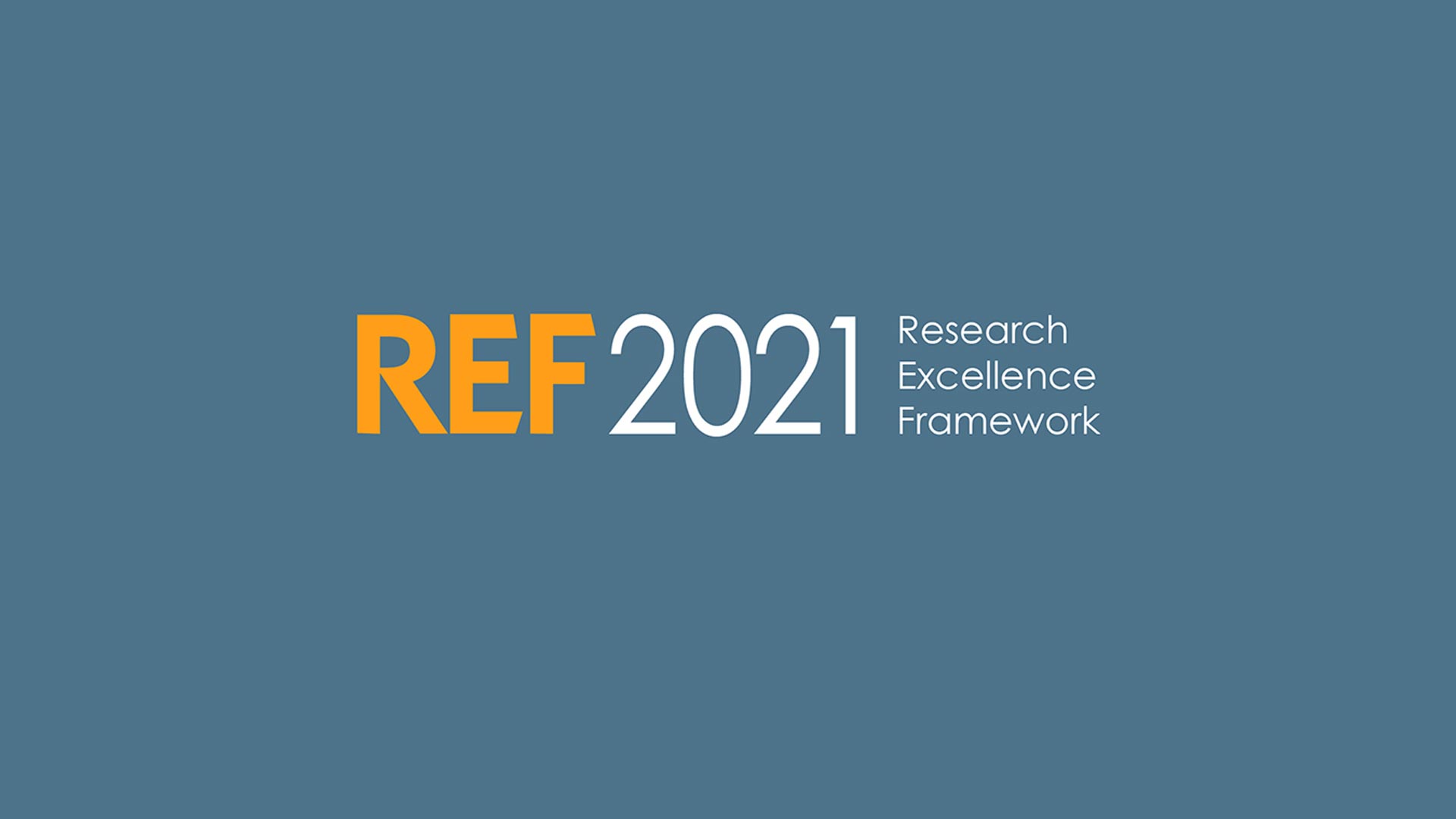Writing an Impactful Narrative
Why Narrative Matters
Weaving your data and findings into a compelling story that captivates your audience, making your research not just understood but felt and remembered. It’s about turning numbers and statistics into a narrative that speaks to the reader on a human level - both informative and engaging.
"Stories are the native language of humanity. We think in stories, we explain in stories, and we use stories to make sense of the world around us."

Power of Narrative in Impact Communication
Humanises the Message: Framing your message around real experiences, challenges, or outcomes, you make abstract concepts tangible and emotionally engaging.
Bridges the Gap Between Data and Action: Connecting the dots between evidence and real-world implications, help decision-makers or the public understand not just the findings, but the urgency and potential consequences of inaction.
Builds Trust and Credibility: Communicating clearly - free from unnecessary jargon - and sharing the real-world context, motivations, and challenges behind your work, you make it more relatable and transparent. That transparency fosters trust.

Results of Impactful Narrative
- Narratives shape understanding
- Narratives shift norms
- Narratives can transform policy
When academic research is framed as part of a larger story, it becomes -
Relatable: It speaks to people's values, concerns and lived experience.
Shareable: A good story travels. Audiences pass it on, expanding your research's reach.
Actionable: It motivates people to support, fund, advocate for, or apply your findings.

That’s the power of narrative: It connects what we know (data and findings) to what we feel (empathy and values) and ultimately to what we do (action and change).
Developing an Impactful Narrative
Step 1: Define Your Audience
Who are you writing for, and why does your work matter to them?
Step 2: Identify A Specific Message
What is the core idea or impact you want to communicate to your defined audience?
Step 3: Choose a Narrative Methodology That Fits
Your narrative structure organises your message. Each method is a tool - you’re not locked into one approach. You might blend elements of different methodologies depending on your communication context. What matters most is making your research understandable, relevant, and memorable.

Narrative Methodologies

Story Arc
Use this when...

Summary Answer
Use this when...


Useful Links
Find a full list of references and further reading

REF2021 Impact Case Study
Click here for a link to the REF2021 Impact Case Study webpage